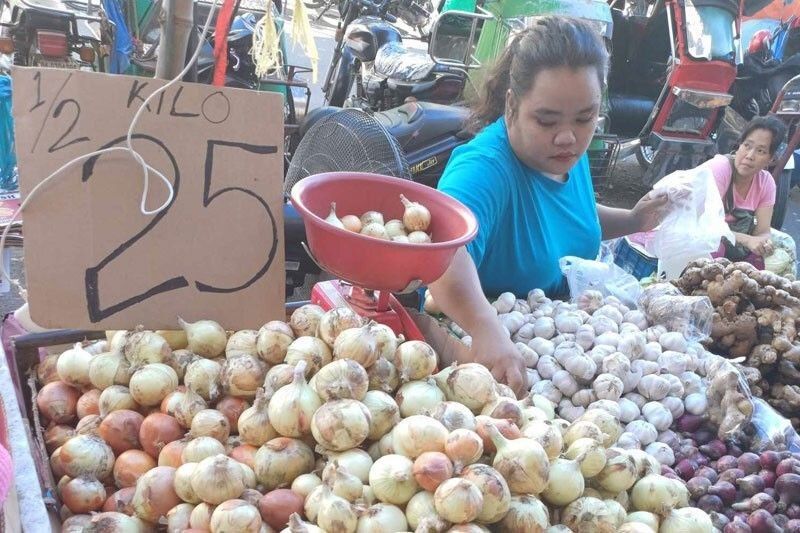Prices expected to remain elevated until Q3
Keisha Ta-Asan – The Philippine Star April 6, 2024 | 12:00am Red and white onions are being sold from 50 to 60 pesos per kilo at a public market in Lingayen, Pangasinan on February 3, 2024. Cesar Ramirez MANILA, Philippines — The Bangko Sentral ng Pilipinas (BSP) sees inflation quickening further and staying above the […]


Keisha Ta-Asan – The Philippine Star
April 6, 2024 | 12:00am
Red and white onions are being sold from 50 to 60 pesos per kilo at a public market in Lingayen, Pangasinan on February 3, 2024.
Cesar Ramirez
MANILA, Philippines — The Bangko Sentral ng Pilipinas (BSP) sees inflation quickening further and staying above the two to four percent target until the third quarter due to the negative impact of weather conditions on agricultural production.
The BSP said that inflation remained within the target range, averaging 3.3 percent in the first quarter, due largely to negative base effects.
“However, inflation could temporarily accelerate above the target range in the next two quarters of the year due to the possible adverse impact of adverse weather conditions to domestic agricultural output and positive base effects,” the central bank said.
The risks to the inflation outlook also continue to lean toward the upside, according to the BSP.
“The upside risks to the inflation outlook could emanate from higher transport charges, higher prices of food commodities facing supply constraints, increased electricity rates, higher global oil prices, and implementation of a legislated increase in the minimum wage,” it said.
Headline inflation edged higher at 3.7 percent in March from 3.4 percent in February. It marked the fourth straight month that inflation stayed within the two to four percent target band. It was also within the BSP’s forecast range of 3.4 to 4.2 percent.
“Looking ahead, the Monetary Board will consider the latest inflation outturn in its upcoming monetary policy meeting on April 8. The BSP also continues to support the national government’s non-monetary measures to address supply-side pressures on prices and sustain the disinflation process,” the BSP added.
The central bank has kept interest rates steady since its off-cycle hike of 25 basis points in October 2023. From May 2022 to October 2023, the BSP tightened borrowing costs by a total of 450 basis points, bringing the key rate to a near-17-year high of 6.50 percent.
Aris Dacanay, economist for ASEAN at HSBC, said the consumer price index (CPI) could breach the target this April before returning to the two to four percent range in August.
“The numbers are consistent with our view that headline CPI will eventually breach the central bank target in the second quarter of 2024, which may, perhaps, result in some market jitters,” Dacanay said.
“Looking closely, however, the rise is mostly due to unfavorable base effects. Once these base effects wear off in August, inflation should immediately return to within the BSP’s target band,” he added.
Dacanay noted that base effects are coming from rice prices as global prices rose sharply in August and September last year.
Rice inflation rose 24.4 percent in March, the fastest pace since 2009 and contributed 2.2 percentage points to overall headline inflation.
“When we hit August this year, base effects should turn favorable, leading to a significant deceleration in headline inflation,” Dacanay said.
“The good news is that this spillover seems to be benign so far, with core CPI easing year-on-year. This showcases that monetary policy is in the works and that there is no impending need for the BSP to raise policy rates further,” he said.
Core inflation, which strips out volatile prices of food and energy items, slowed to 3.4 percent in March from 3.6 percent previously. Core inflation has been slowing down for the 12th consecutive month.
Dacanay expects the Monetary Board to keep policy rates unchanged anew at its second rate-setting meeting on April 8.














